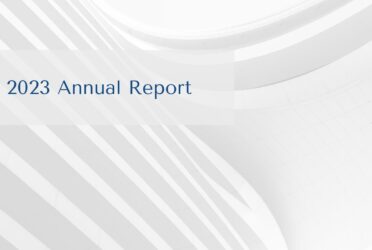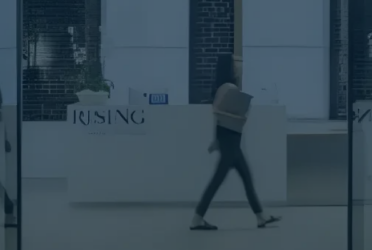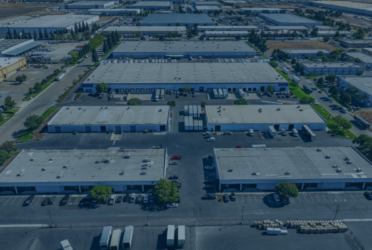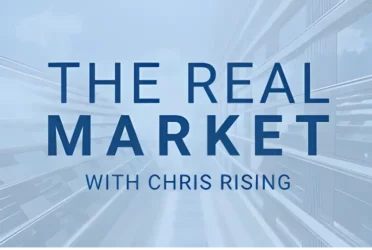Should You Invest In Real Estate During Inflation?

What does that mean for your investment in real estate? It is complicated, but the most likely answer is that both the net operating income and the overall value of commercial real estate will rise in a period of inflation. What is more, commercial real estate is likely to outperform in a way that other investments will not.
Real property has a reputation as a safe haven against uncertainty and as a hedge against rising prices. But for investors trying to compare today’s inflationary pressures to those of the past, there is a big gap in the data.
That is because the U.S. simply has not experienced high inflation since the early 1980s, a period that predates the modern era of real estate investment trusts, commercial mortgage-backed securities, crowdsourcing and other innovations in the property market. While the U.S. saw periods of double-digit inflation back in the 1970s and ‘80s,. But from 1990 through 2020, the inflation rate rarely topped 3 percent.
What is Inflation?
Inflation is a measure of how much prices are rising. (If consumer prices are falling, the result is known as deflation). The U.S. Labor Department’s Bureau of Labor Statistics tracks inflation by creating a “basket of goods” and then comparing current price levels to prices of a year ago. The most commonly cited inflation indices in the U.S. economy are the consumer price index, the producer price index and the wholesale price index. The consumer price index includes a number of common goods, like groceries, clothes and electronics – along with the occasional head-scratcher, such as the “imputed” value of housing.
The economic consensus is that moderate inflation is good, while too little or too much inflation is unhealthy for the economy. The Fed shoots for a target inflation rate of 2 percent, a number it had consistently hit until 2021. At that target rate, consumers and producers enjoy certainty – they know how much to budget from one month to the next. While the Fed does not directly control the rate of inflation, it tries to nudge prices in the desired direction, either by lowering interest rates to stimulate the economy when prices are too low, or by raising rates to cool prices when inflation gets too high.
Inflation disappeared from the U.S. economy for decades by design. In the early 1980s, then-President Ronald Reagan and then-Federal Reserve Chairman Paul Volcker waged war on rising inflation. They won, and inflation hovered in the low single digits for years.
Then came the coronavirus recession and its unusual combination of a global lockdown in the spring of 2020 and massive government stimulus that sent money in all directions – to unemployed workers, to taxpayers with children, to business owners, to the bond market and the mortgage-backed securities market. As the economy got back on track in 2021, prices jumped 4 percent in the spring of 2021 compared to a year earlier, and then to 5 percent in the summer of 2021. The Federal Reserve labeled the phenomenon “transitory.”
To paraphrase central bankers’ early analysis, they thought the price spike was just another pandemic surprise, one that would sort itself out quickly. The world economy slammed on the brakes in March 2020. Consumers stopped eating out, going to movies, taking trips and making other routine purchase. That pause a period of deflation. At the same time, the federal government filled consumers’ bank accounts with stimulus money, setting the stage for a spike in prices once pandemic lockdowns eased.
As economic activity returned to normal, the Fed’s thinking went, prices would inevitably spike. After all, annual inflation is simply a comparison to prices a year earlier. And consumers in 2021 were spending much more than a year earlier. But once consumers spent themselves out, the transitory argument went, everything would return to normal.
That is not what is happening, though. Shortages remain for all manner of goods, including cars, appliances and building materials. The Fed no longer describes inflation as temporary. If prices keep rising, that new reality will change the way investors think about commercial real estate.
How Does Inflation Impact the Real Estate Industry?
In general, an inflationary environment allows landlords to charge higher rents when negotiating leases, and to command higher prices when it’s time to sell. But inflationary periods typically correspond with higher rates for commercial mortgages, raising an investor’s cost of borrowing. The pandemic-era bout of inflation came as something of a surprise, so it is difficult to predict precisely how inflation will flow through to the real estate industry, but here’s an overview:
Rental Rates Will Increase
In the best-case scenario for investors, landlords will be able to pass through rent increases to tenants. In an economy where business costs of all sorts are rising, tenants might accept higher bumps in annual rents than they may be willing to stomach in a period of moderate inflation. This is especially true if the inflationary cycle is being driven by burgeoning demand and a booming economy. If, on the other hand, inflation is caused by a jump in the cost of goods, landlords might not have as much leverage to negotiate higher rents. Standard inflation clauses can be written into leases in a way that protects landlords’ interests by automatically tying rent to the consumer price index.
Meanwhile, inflationary pressures don’t negate the forces of supply and demand within given property markets. Landlords can raise rents only if the demand for space outpaces the supply. During the pandemic, certain property sectors have experienced more demand than supply. These include warehouse and distribution space, multifamily properties, grocery-anchored shopping centers and medical offices. Shopping malls have notably seen a decline in demand amid the rise of e-commerce. Office space remains something of a puzzle, with some employers insisting they’ll continue to occupy offices after the pandemic and others happily shifting to permanent work-from-home arrangements.
Borrowing Costs Will Be Higher
In a period of sustained inflation, rates on commercial mortgages are all but sure to rise. That’s because the Fed is likely to push rates higher in an attempt to corral inflation. While the central bank doesn’t dictate commercial mortgage rates, it does exert strong influence on borrowing costs by setting the overall climate for interest rates. The Fed cut its benchmark rate to zero at the beginning of the coronavirus pandemic, and borrowing costs responded by plunging to historic lows. But the inflationary pressures that emerged in 2021 led the Fed to warn markets that it expected multiple rate increases in 2022. So a period of sustained price increases likely will raise the costs of financing a purchase or refinancing an existing mortgage. Borrowers with fixed-rate mortgages likely won’t see the effects until they refinance. Owners with adjustable-rate loans could see their payments rise in 2022.
The Cost of Properties Will Increase
Because of its reputation as a hedge against inflation, real estate investment grows more appealing during periods of rising prices. Investors do not want their money to lose value by sitting in cash, so they look for places to put their money that will generate inflation-beating turns. In this self-perpetuating cycle, more dollars are chasing properties than there are properties available to buy, so prices head up. One caveat here is that a jump in borrowing costs can reduce investors’ buying power of when they are bidding on properties.
Inflation also creates a very practical reason for property prices to increase: Building materials cost more today than they did a year ago, which means the replacement value of any existing building is on the rise. That reality creates a tailwind for property prices.
Differences Between Investing in Real Estate and Other Investments
As a direct investor in real estate, you take an active role in the management of your property. The owner can shape the strategy and direction of a commercial property. That is a contrast with stock ownership, a type of investment that all but forces to you take a passive role and let others call the shots.
Many real estate investors like the tangible aspect of real estate investment – they can touch, feel and tour properties, something that is not plausible if you are investing in equities. Many real estate investors also benefit from tax breaks that accompany real estate ownership.
As far as acting as a hedge against inflation, real estate historically has outperformed stocks on this front. Investors can expect commercial real estate values to rise along with overall prices, something that cannot be said for stocks.
Real Estate Offers Hedge Against Inflation
Because U.S. commercial real estate markets have not seen sustained inflation for decades, it is hard to know exactly how property values might hold up should inflation continue to accelerate. However, the best bet is that commercial real estate will protect investors’ portfolios against rising prices. Ryan Severino, chief economist for commercial real estate giant JLL, describes the asset class as “an imperfect hedge against inflation.”
The economics team at CBRE, another major player in commercial real estate services, gives a similarly nuanced outlook for commercial real estate values in an inflationary environment. The CBRE analysts crunched the numbers and concluded that a one percentage point increase in the consumer price index leads to a 1.47 percentage point decline in real total returns for office properties. There are many caveats, though, starting with what’s driving inflation. Is the inflation caused by a booming economy? In that case, commercial real estate will benefit from rising occupancy and higher rents. However, if inflation driven not by robust growth but by higher costs of goods, then that presents a more pessimistic scenario for commercial real estate investors.
Cushman & Wakefield, also a major commercial real estate service firm, crunches the inflation numbers and reaches a different conclusion. It says that for each one percentage point increase in prices, commercial landlords can expect a 1.1 percent increase in total returns. And it says inflation will lead to a decline in capitalization rates – and a rise, of course, in property prices.
Rental Properties Generate Higher ROI
In most cases, your rental property will generate a higher net operating income in an inflationary environment. You’ve already locked in the purchase price of the property, and your borrowing costs likely will hold steady for at least a few years. But if your rental incomes are rising, either because you’re negotiating higher rates with new tenants or because existing tenants are subject to inflation clauses, then your property will generate higher operating cash flows.
Appreciation Can Offset Inflation
The combination of higher operating incomes and rising property values means that commercial property investors are reaping the rewards in an inflationary environment. And that’s the point of commercial real estate as a hedge against inflation. Rather than parking your assets in cash whose value is being eaten away by rising prices and diminishing purchasing power, you’re protecting your wealth in an asset that is performing better than inflation.
Conclusion
Economists continue to debate whether the 2021 spasm of inflation is temporary or permanent. Commercial real estate investors can feel confident that their portfolios provide protection against rising prices. Savvy investors will take a dose of caution, too. Commercial real estate markets have evolved significantly since the last bout of sustained inflation. So, while it’s a safe bet that real estate will provide shelter in the storm, no one is certain exactly how modern real estate markets will behave in an inflationary environment.












 Podcast
Podcast